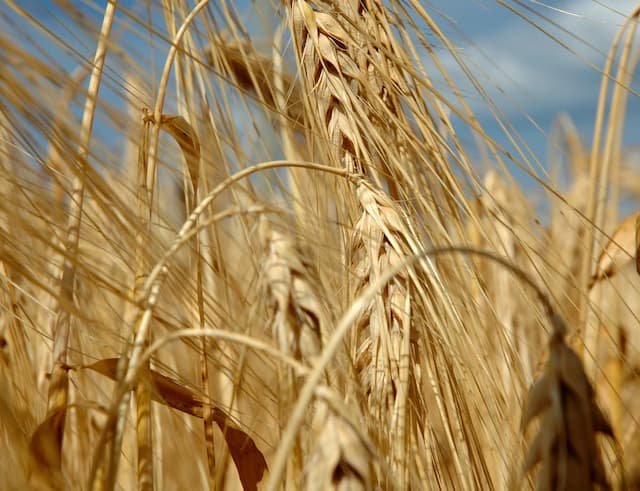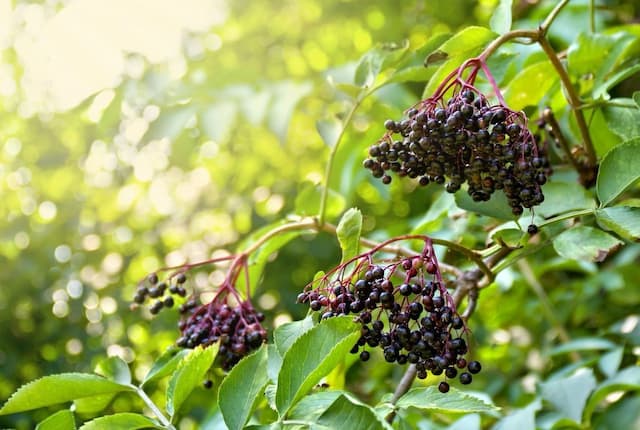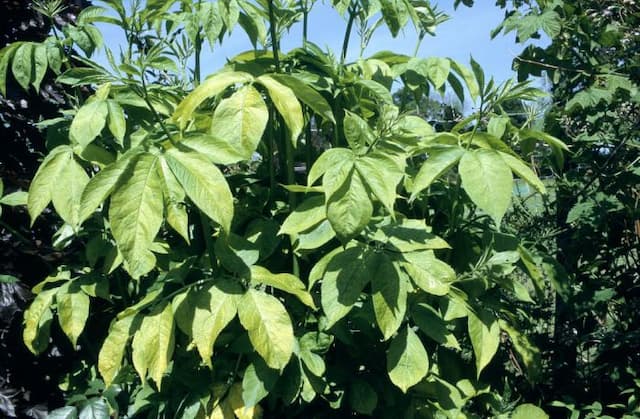Judd viburnum Viburnum × juddii

ABOUT
The plant commonly known as the Judd viburnum has a rounded form with dense branching that creates a lush, bushy appearance. It is adorned with dark green leaves that have a slightly wrinkled texture and softly serrated edges. The foliage often takes on a reddish to deep burgundy hue in the fall, adding a splash of color to the landscape. In the spring, this plant becomes particularly striking when it blooms with snowball-like clusters of fragrant flowers. These blossoms are white with a hint of pink and emit a sweet, spicy scent that can perfume the surrounding area. Following the flowering period, the plant produces small, oval-shaped fruits that typically mature to a dark, almost black hue, providing visual interest and attracting wildlife.
About this plant
 Names
NamesFamily
Adoxaceae
Synonyms
Judd Viburnum, Judd's Viburnum
Common names
Viburnum × juddii
 Toxicity
ToxicityTo humans
Judd viburnum (Viburnum × juddii) is generally considered to have a low toxicity to humans. While ingestion of parts of the plant might not be advisable, it does not typically produce serious effects. If ingested in large amounts, mild stomach upset could occur. However, there are no severe toxic consequences associated with this plant for humans.
To pets
Judd viburnum is also considered to have low toxicity to pets. It does not rank among the commonly known toxic plants for household animals like cats and dogs. If a pet ingests a small quantity, it's unlikely to cause more than mild gastrointestinal upset. However, large amounts might cause vomiting or diarrhea, though serious toxic effects are generally not expected from this plant.
 Characteristics
CharacteristicsLife cycle
Perennials
Foliage type
Deciduous
Color of leaves
Green
Flower color
Pink
Height
6 feet (1.83 meters)
Spread
6 feet (1.83 meters)
Plant type
Shrub
Hardiness zones
4
Native area
Cultivar
Benefits
 General Benefits
General Benefits- Ornamental Appeal: Judd viburnum features attractive, fragrant flowers that enhance the aesthetic value of landscapes.
- Habitat Support: Serves as a habitat and food source for birds and beneficial insects.
- Seasonal Interest: Offers year-round visual interest through changing foliage, flowers in spring, and berries in late summer to fall.
- Erosion Control: Its root system helps stabilize the soil, preventing erosion.
- Privacy Screen: Can be used in hedges or as a natural screen to increase privacy in gardens.
- Low Maintenance: Once established, it requires minimal care, making it suitable for gardeners of all skill levels.
- Hardiness: Adapts to a wide range of climates and can tolerate various soil types.
 Medical Properties
Medical PropertiesThis plant is not used for medical purposes.
 Air-purifying Qualities
Air-purifying QualitiesThis plant is not specifically known for air purifying qualities.
 Other Uses
Other Uses- In crafting, the flexible branches of Viburnum × juddii can be used to create wreaths or other decorative items, especially in the fall when they have attractive berries and foliage.
- The dense foliage of Judd viburnum can provide a backdrop in photography, especially for close-up shots where a green, textured background is desired.
- Judd viburnum's attractive flowers can be used in edible flower arrangements, though their edibility should be checked for each cultivar.
- During the winter, the plant's sturdy structure can support garden lighting or small bird feeders adding functionality to its ornamental use.
- Leaves of the Judd viburnum can be used in compost piles as they break down and contribute to the nutrient content of the compost.
- The coarse texture of the leaves can be used in natural art projects, such as leaf rubbing, where the veined patterns create interesting prints.
- The wood from mature Viburnum × juddii might be carved into small objects or used in woodworking for inlay details.
- In larger landscapes, Judd viburnum can be planted as a noise buffer, with its dense growth helping to absorb and reduce sound pollution.
- Seasonal employment for Judd viburnum may include serving as natural holiday decorations with its red berries and glossy leaves.
- The strong branches of Judd viburnum are sometimes used in trellising for climbing plants, providing structural support.
Interesting Facts
 Feng Shui
Feng ShuiJudd Viburnum is not used in Feng Shui practice.
 Zodiac Sign Compitability
Zodiac Sign CompitabilityJudd Viburnum is not used in astrology practice.
 Plant Symbolism
Plant Symbolism- Renewal: Viburnum x juddii, commonly known as Judd viburnum, often symbolizes the concept of new beginnings or renewal because it blooms early in the spring, signifying the end of winter and the start of a new growing season.
- Protection: The dense, rounded form of Judd viburnum can offer shelter to birds and wildlife, which can be interpreted as a symbol of protection and care.
- Abundance: With its abundant clusters of fragrant flowers that later develop into fruits, Judd viburnum can represent bounty and generosity.
 Water
WaterJudd Viburnum should be watered deeply and thoroughly so the soil is moist but not soggy. During the first growing season, it's essential to maintain evenly moist soil, which might require watering once or twice a week, depending on weather conditions. After establishment, the plant is somewhat drought-tolerant but still benefits from watering every couple of weeks during dry spells. Generally, 1 to 1.5 gallons per watering should suffice, ensuring it reaches the root zone. Reduce frequency in winter when the plant is dormant.
 Light
LightJudd Viburnum thrives in full sun to partial shade. The ideal location provides morning sunlight with some afternoon shade, especially in hotter climates. Too much shade can lead to reduced flowering and a leggy growth habit, while too much direct sun in the hottest regions can stress the shrub, so a balance is key.
 Temperature
TemperatureJudd Viburnum is hardy and can tolerate a range of temperatures, typically thriving in USDA zones 4 through 8. It can survive minimum temperatures down to about -30 degrees Fahrenheit, and its maximum temperature tolerance generally caps around 85-90 degrees Fahrenheit. The ideal temperature range for robust growth and flowering is between 60 to 75 degrees Fahrenheit.
 Pruning
PruningJudd Viburnum benefits from pruning to maintain shape and promote vigorous growth. Prune immediately after flowering, typically in late spring or early summer, as it blooms on old wood. Remove any dead or damaged branches, and thin out older stems to allow light and air into the plant. Pruning can be done annually, but it's not always necessary each year—monitor the plant's shape and health to determine the need.
 Cleaning
CleaningAs needed
 Soil
SoilJudd Viburnum thrives best in well-drained soil rich in organic matter. A good soil mix consists of equal parts garden soil, compost, and peat moss or a soil conditioner, which together create a fertile environment with good moisture retention. The ideal pH for Judd Viburnum ranges from slightly acidic to neutral, around 5.6 to 7.0.
 Repotting
RepottingJudd Viburnum typically does not require frequent repotting as it is usually planted directly into the landscape. It's a shrub that, once established in the right conditions, will not need to be repotted. If grown in a container, repotting every 2-3 years or when root-bound is generally sufficient.
 Humidity & Misting
Humidity & MistingJudd Viburnum is quite adaptable to different humidity levels and typically does well in the average outdoor humidity found in its growing zones. It does not require any special humidity considerations when planted in the landscape.
 Suitable locations
Suitable locationsIndoor
Plant in well-lit area, ensure pot has good drainage.
Outdoor
Plant in well-drained soil, full sun to partial shade.
Hardiness zone
4-8 USDA
 Life cycle
Life cycleViburnum x juddii, commonly known as Judd viburnum, begins its life cycle with germination from seed after a period of cold stratification, simulating winter. As a seedling, it establishes roots and a small stem, gradually forming a deciduous shrub. The juvenile stage is marked by rapid growth and the development of foliage. Upon reaching maturity, which can take several years, Judd viburnum blossoms in early to mid-spring, producing fragrant white to slightly pink flowers that attract pollinators. After pollination, the plant develops small red to black fruit (drupes) that are favored by birds, aiding in seed dispersal. Throughout the plant's life, which can span decades, it undergoes annual cycles of growth, flowering, fruiting, and dormancy.
 Propogation
PropogationPropogation time
Spring to Early Summer
Propogation: Judd Viburnum (Viburnum × juddii) is commonly propagated through softwood cuttings, which is one of the most popular methods owing to its relative ease and effectiveness. This process is typically done in late spring or early summer when the new growth is still tender and pliable. To propagate by cuttings, a 4 to 6-inch (10 to 15 centimeters) section of the plant's stem is cut just below a node, where leaves and buds form. The lower leaves are removed, and the cut end can be dipped in rooting hormone to encourage root development. The cutting is then placed in a well-draining potting mix, ensuring at least one node is below the surface. The container should be kept moist but not overly wet, and it's helpful to cover it with a plastic bag or place it in a greenhouse to maintain high humidity, which aids in root formation. Roots usually develop within a few weeks, after which the new plant can be gradually acclimatized to outside conditions and eventually planted in the garden.



![Elder [Black Tower]](/_next/image?url=https%3A%2F%2Fplants-admin.emdemapps.com%2Fimages%2Fplants%2F%2Fimages%2F604b5cad99578.png&w=640&q=75)





